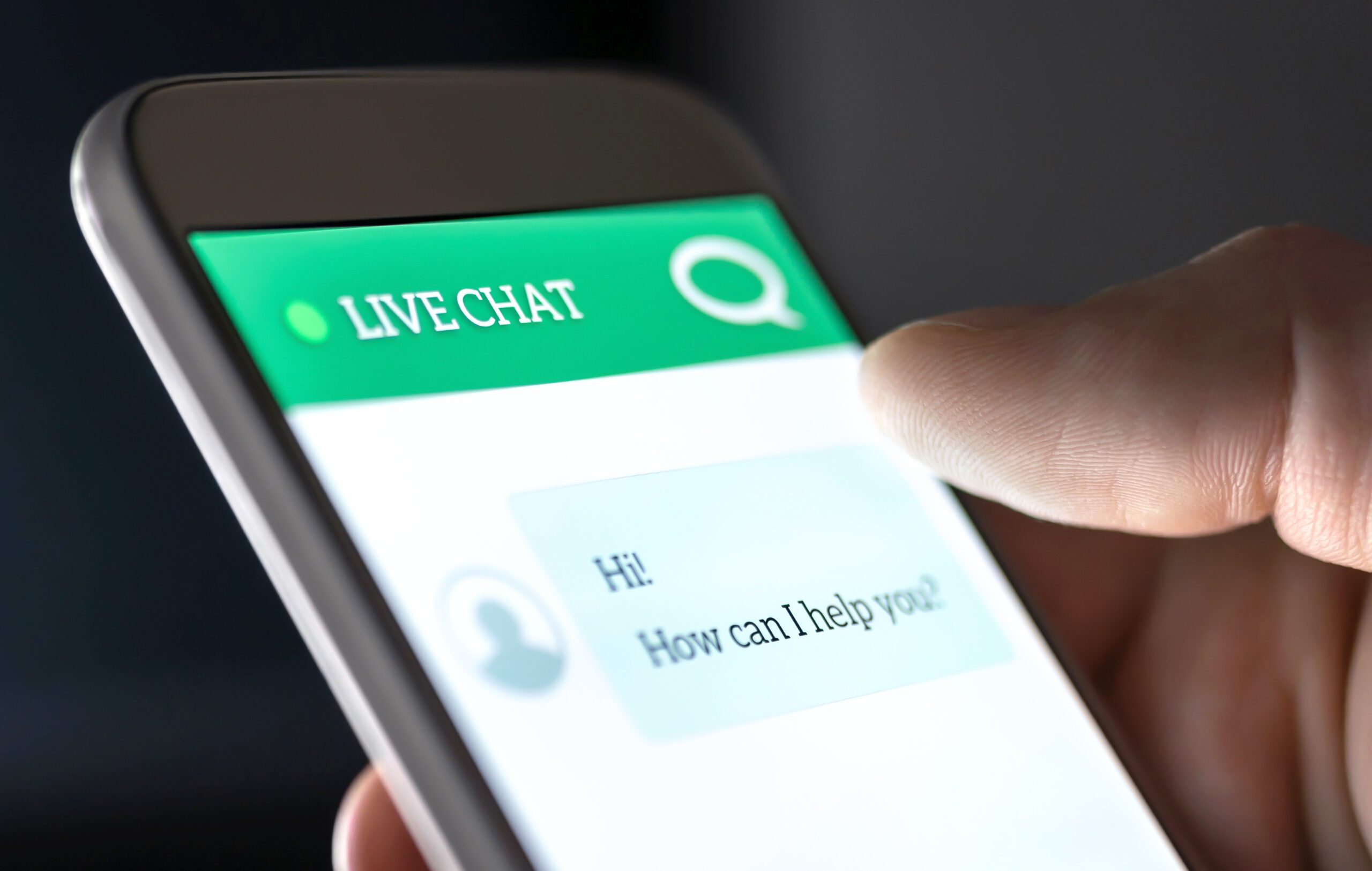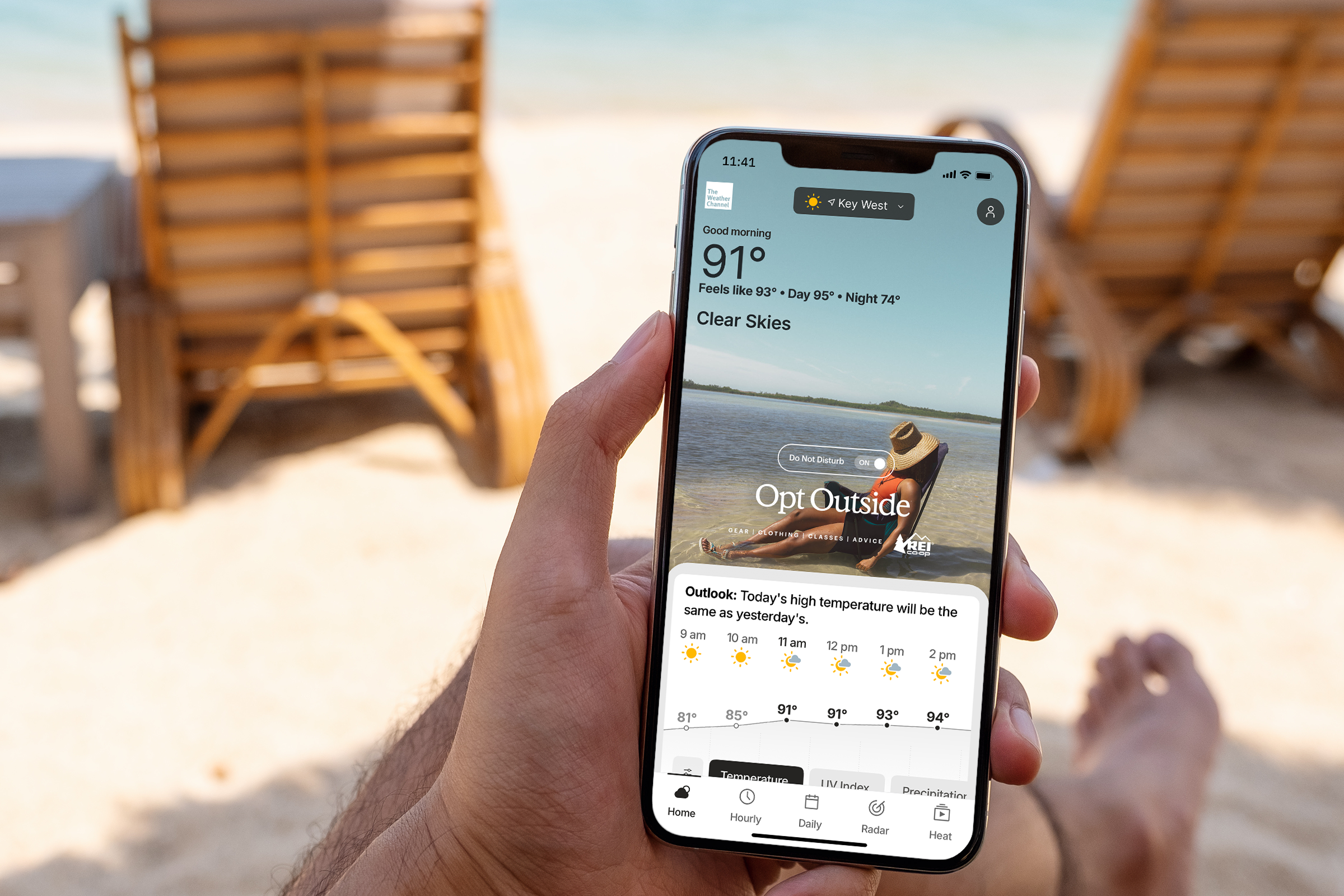Weather intelligence for the future: Crafting a strategic enterprise approach to changing environmental conditions
Continue readingWhat is a chatbot?
AI chatbots are programmed to provide human-like conversations to customers. They have quickly become a cornerstone for businesses, helping to engage and assist customers around the clock. Designed to do almost anything a customer service agent can, they help businesses automate tasks, qualify leads and provide compelling customer experiences.
Below, we’ll describe chatbot technology in detail, including how it works, what benefits it provides businesses and how it can be employed. Additionally, we’ll discuss how your team can go beyond simply utilizing chatbot technology to developing a comprehensive conversational marketing strategy.
How chatbots have evolved and developed
Chatbots as we know them today were created as a response to the digital revolution. As the use of mobile applications and websites increased, there was a demand for around-the-clock customer service. Chatbots enabled businesses to provide better customer service without needing to employ teams of human agents 24/7.
In 2016, with the introduction of Facebook’s Messenger app and Google Assistant, the adoption of chatbots dramatically accelerated. Now they are not only common on websites and apps but often hard to tell apart from real humans. This market is also expected to grow over the next few years. According to a Grand View Research report, the global chatbot market is expected to reach USD 1.25 billion by 2025, with a compound annual growth rate of 24.3%.
How do chatbots work?
There are several ways to interact with a chatbot. For example, a customer might want to learn more about products and services, find answers to commonly asked questions or find assistance for their shopping experience. Chatbots can process these incoming questions and deliver relevant responses, or route the customer to a human customer service agent if required.
Below are some of the main kinds of chatbots, each with different capabilities:
- Rule-based chatbots. Rule-based chatbots are also known as decision-tree chatbots. These are the simplest chatbots, which attempt to map out customer conversations to narrow down the customer’s intent. Rule-based chatbots do not learn over time and only work in the specific scenarios that you design them for.
- Menu-based chatbots: Menu-based chatbots provide a selection of options to the end user. These options will eventually lead to an answer to the user’s query. While these kinds of chatbots may be well suited for simple solutions, they may frustrate users with more complicated questions.
- Hybrid chatbots: Hybrid chatbots combine automation technology with a live representative. The chatbots can respond to common questions, while a person will address the more complicated issues.
- Keyword-based chatbots. Keyword-based chatbots are programmed to analyze text for keyword combinations and generate a relevant response. This allows for more flexible and natural conversations and users can ask more complex questions.
- Machine-learning chatbots. Machine-learning chatbots, also known as artificial intelligence (AI) chatbots, are the most sophisticated. They enable users to ask advanced, open-ended questions and offer the most natural responses. These chatbots continue to learn from conversations and improve their responses over time.
How does a machine-learning chatbot work?
A machine-learning chatbot is a form of personalized conversational marketing software that acts like a human by stimulating conversation through a mobile app or website. They use two advanced AI technologies to analyze data and teach themselves to interact as humans would:
Machine learning is the use of complex algorithms and models to draw insights from patterns in data. These insights can be used to improve the chatbot’s abilities over time, making them seem more human and enabling them to better accommodate user needs.
Natural language processing (NLP) is a form of linguistics powered by AI that allows computers and technology to understand text and spoken words similar to how a human can. This is the foundational technology that lets chatbots read and respond to text or vocal queries.
Training a chatbot with a series of conversations and equipping it with key information is the first step. Then, when a customer asks a question, the NLP engine identifies what the customer wants by analyzing keywords and intent. Once the conversation is over, the chatbot improves itself via feedback from the customer.
How are chatbots used?
Chatbots are used to automate day-to-day business operations, but there are several roles they can play, including:
Conversational marketing
Conversational marketing chatbots use AI and machine learning to interact with users. They can remember specific conversations with users and improve their responses over time to provide better service.
For example, a conversational marketing chatbot could be used to help a customer order food online or check on what movie tickets are available near them.
Customer service
Chatbots are also used as substitutes for customer service representatives. They are available all hours of the day and can provide answers to frequently asked questions or guide people to the right resources.
A subset of these is social media chatbots that send messages via social channels like Facebook Messenger, Instagram, and WhatsApp.
Lead generation
Lead generation chatbots can be used to collect contact details, ask qualifying questions, and log key insights into a customer relationship manager (CRM) so that marketers and salespeople can use them.
Benefits of machine learning chatbots in a conversational marketing strategy
Chatbots help companies by automating several functions, simplifying customer service and decreasing costs for the organization. Here are some of the major benefits of machine-learning chatbots:
Increase audience engagement
Chatbots don’t have the same time restrictions as humans, so they can answer questions from customers all around the world, at any time. Even better, they can serve a limitless customer base at one time.
Chatbots also help increase engagement on a brand’s website or mobile app. As customers wait to get answers, it naturally encourages them to stay onsite longer. They can also be programmed to reach out to customers on arrival, interacting and facilitating unique customized experiences.
Provide answers to customer questions
Sales cycles are becoming longer as customers dedicate more time to educating themselves about brands and their competitors before deciding to make a purchase.
Chatbots are a practical way to inform your customers about your products and services, providing them with the impetus to make a purchase decision. For example, machine-learning chatbots can anticipate customer needs or help direct them to relevant products.
Deliver personalization at scale
By using machine learning, your team can deliver personalized experiences at any time, anywhere. AI can analyze consumer interactions and intent to provide recommendations or next steps. By leveraging machine learning, each experience is unique and tailored to the individual, providing a better customer experience.
Create more memorable ad experiences
Since ads are catered to the individual’s preferences, they become more memorable for your target audience. In fact, The Weather Company Conversations delivers 54% greater impact than standard rich media.* By leveraging machine learning, you can better anticipate your client’s needs, while offering them answers and recommendations they can act on.
Reach customers across a variety of touchpoints
Conversational marketing can be deployed across a wide variety of platforms and tools. Meet your customers where they are, whether that be via digital ads, mobile apps or in-store kiosks.
Gain new insights without cookies
As privacy concerns become more prevalent, marketers need to get creative about the way they collect data about their target audience—and a chatbot is one way to do so.
Machine-learning chatbots can collect data and new insights about your target audience without the use of cookies. They can be used to gather customer email addresses and phone numbers, discover key customer interests and behaviors, and automatically qualify leads.
Industries that can utilize chatbots
While chatbots are certainly increasing in popularity, several industries underutilize them. For businesses in the following industries, chatbots are an untapped resource that could enable them to automate processes, decrease costs and increase customer satisfaction.
Retail
Retailers are dealing with a large customer base and a multitude of orders. Customers often have questions about payments, order status, discounts and returns. By using conversational marketing, your team can better engage with consumers, provide personalized product recommendations and tailor the customer experience.
Healthcare and pharma
People are increasingly turning to the internet to find answers to their health questions. As the pandemic continues, the volume of these questions will only go up. Chatbots can help to relieve the workload of healthcare professionals who are working around the clock to provide answers and care to these people.
Automobile
Machine-learning chatbots can also be utilized in automotive advertisements where education is also a key factor in making a buying decision. For example, they can allow users to ask questions about different car models, parts, prices and more—without having to talk to a salesperson.
Examples of machine-learning chatbots in action
Conversational marketing and machine-learning chatbots can be used in various ways. Below are examples of how companies have employed this strategy.
Behr uses conversational marketing to recommend the right paint color
DIY projects have risen in popularity in recent years. However, the paradox of choice makes it difficult for many to start on their own home renditions. Behr wanted to make it easier for consumers to find the right paint color to begin their projects. By partnering with Conversations, they were able to achieve the following results:
- Over 10K 1:1 conversations between Behr and consumers, helping each user find their own personalized paint color recommendation
- 3.4x more time spent vs. Google Rich Media interaction time benchmark
- +108% engagement rate vs. The Weather Company Conversations benchmark
Behr was able to also discover further insights and feedback from customers, allowing them to further improve their product and marketing strategy.
The Weather Channel provides accurate COVID-19 information at scale
After learning that users were struggling to find COVID-19 information they could trust, The Weather Channel created the COVID-19 Q&A chatbot. This chatbot was trained using information from the Centers for Disease Control (CDC) and Worldwide Health Organization (WHO) and was able to help users find crucial information about COVID-19.
Customers could ask a question like “What are the symptoms of COVID-19?”, to which the chatbot would reply with the most up-to-date information available. Once deployed, the chatbot answered over 2.6 million questions and took part in more than 400,000 conversations, helping users around the world find answers to their pressing COVID-19-related questions.
Final thoughts
Chatbots have quickly become integral to businesses around the world. They make it easier to provide excellent customer service, eliminate tedious manual work for marketers, support agents and salespeople, and can drastically improve the customer experience.
Conversations facilitates personalized AI conversations with your customers anywhere, any time. Contact us to learn more about Conversations today.
Frequently asked questions
Chatbots provide value to companies in many ways, including:
- Streamlining and scaling internal processes
- Creating more engaging and memorable ad experiences
- Gaining new insights about your target audience without cookies
- Adding more touchpoints in your customer journey
Some common misconceptions about chatbots include:
- Misconception 1: A chatbot and a bot are the same thing. The terms chatbot and bot are often mistakenly used to mean the same thing. A bot is just a program that is used to automate a function, and these have a negative connotation since they are often used for malicious activities. Chatbots, on the other hand, are simply conversational tools that help businesses complete routine tasks.
- Misconception 2: Only customer service departments benefit from chatbots. As we covered above, while chatbots are often used for customer service, they have many other capabilities beyond this. These capabilities include lead generation, conversational marketing, answering FAQs, or providing virtual assistance.
- Misconception 3: Chatbots can only answer simple questions. When companies incorporate machine learning into their conversational marketing strategy, chatbots can answer more complex questions. Since AI can learn, more data results in more comprehensive answers and solutions.
- Misconception 4: Only large companies or enterprises use chatbots. Businesses of any size can benefit from chatbots as a cost-effective way to perform routine business tasks around the clock.
- Misconception 5: They’re impersonal and take the place of human jobs. With AI technology powering chatbots, they’re now able to create human-sounding conversations that are personal, convincing and helpful. Using chatbots means that marketers and salespeople can spend their time doing the engaging, high-level work that requires a human touch.
Let's talk
What’s your weather strategy? To learn more about increasing campaign efficiencies and personalizing messages at the most relevant moments, contact our advertising experts today.
Contact us* Source: Kantar Millward Brown research
The performance data and client examples cited are presented for illustrative purposes only. Actual performance results may vary depending on specific configurations and operating conditions.







